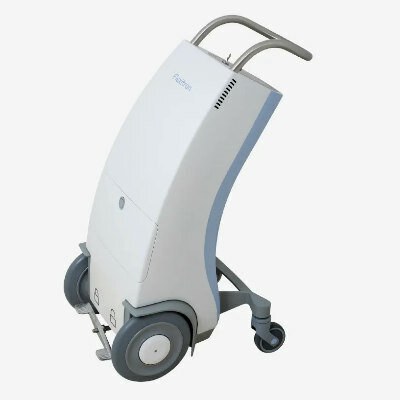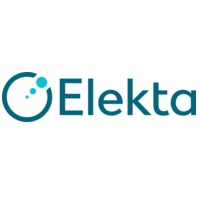Machine Learning Can Predict Heart Disease Better Than Other Risk Models
|
By MedImaging International staff writers Posted on 17 Jul 2019 |

Image: Research shows machine learning is more effective at predicting heart disease over conventional risk models (Photo courtesy of Health Imaging).
A study conducted by researchers from the Yale School of Medicine (New Haven, CT, USA) has demonstrated that machine learning (ML), a type of artificial intelligence, performs better than conventional risk models at predicting heart attacks and other cardiac events when used along with a common heart scan.
Accurate risk assessment is crucial for early interventions in the case of heart diseases, although risk determination is an imperfect science, and popular existing models such as the Framingham Risk Score have limitations, as they do not directly consider the condition of the coronary arteries. Coronary computed tomography arteriography (CCTA), a kind of CT that provides highly detailed images of the heart vessels, has emerged as a promising tool for refining risk assessment. In fact, it has proved so promising that a multi-disciplinary working group recently introduced a scoring system for summarizing CCTA results. The decision-making tool, known as the coronary artery disease reporting and data system (CAD-RADS), emphasizes stenoses, or blockages and narrowing in the coronary arteries. CAD-RADS is an important and a useful development in the management of cardiac patients, although its focus on stenoses could leave out important information about the arteries, according to the researchers.
Noting that CCTA shows more than just stenoses, the researchers investigated an ML system capable of mining the myriad details in these images for a more comprehensive prognostic picture. For the study, the research team compared the ML approach with CAD-RADS and other vessel scoring systems in 6,892 patients. The researchers followed the patients for an average of nine years after CCTA. There were 380 deaths from all causes, including 70 from coronary artery disease. In addition, 43 patients reported heart attacks.
In comparison to CAD-RADS and other scores, the ML approach better discriminated which patients would have a cardiac event from those who would not. When deciding whether to start statins, the ML score ensured that 93% of patients with events would receive the drug, as compared with only 69% if CAD-RADS were relied on.
If machine learning can improve vessel scoring, then it would enhance the contribution of non-invasive imaging to cardiovascular risk assessment. Additionally, if the ML-derived vessel scores could be combined with non-imaging risk factors, such as age, gender, hypertension and smoking, to develop more comprehensive risk models, then it would benefit both physicians and patients.
“The risk estimate that you get from doing the machine learning version of the model is more accurate than the risk estimate you’re going to get if you rely on CAD-RADS. Both methods perform better than just using the Framingham risk estimate. This shows the value of looking at the coronary arteries to better estimate people’s risk,” said study lead author Kevin M. Johnson, M.D, associate professor of radiology and biomedical imaging at the Yale School of Medicine.
Related Links:
Yale School of Medicine
Accurate risk assessment is crucial for early interventions in the case of heart diseases, although risk determination is an imperfect science, and popular existing models such as the Framingham Risk Score have limitations, as they do not directly consider the condition of the coronary arteries. Coronary computed tomography arteriography (CCTA), a kind of CT that provides highly detailed images of the heart vessels, has emerged as a promising tool for refining risk assessment. In fact, it has proved so promising that a multi-disciplinary working group recently introduced a scoring system for summarizing CCTA results. The decision-making tool, known as the coronary artery disease reporting and data system (CAD-RADS), emphasizes stenoses, or blockages and narrowing in the coronary arteries. CAD-RADS is an important and a useful development in the management of cardiac patients, although its focus on stenoses could leave out important information about the arteries, according to the researchers.
Noting that CCTA shows more than just stenoses, the researchers investigated an ML system capable of mining the myriad details in these images for a more comprehensive prognostic picture. For the study, the research team compared the ML approach with CAD-RADS and other vessel scoring systems in 6,892 patients. The researchers followed the patients for an average of nine years after CCTA. There were 380 deaths from all causes, including 70 from coronary artery disease. In addition, 43 patients reported heart attacks.
In comparison to CAD-RADS and other scores, the ML approach better discriminated which patients would have a cardiac event from those who would not. When deciding whether to start statins, the ML score ensured that 93% of patients with events would receive the drug, as compared with only 69% if CAD-RADS were relied on.
If machine learning can improve vessel scoring, then it would enhance the contribution of non-invasive imaging to cardiovascular risk assessment. Additionally, if the ML-derived vessel scores could be combined with non-imaging risk factors, such as age, gender, hypertension and smoking, to develop more comprehensive risk models, then it would benefit both physicians and patients.
“The risk estimate that you get from doing the machine learning version of the model is more accurate than the risk estimate you’re going to get if you rely on CAD-RADS. Both methods perform better than just using the Framingham risk estimate. This shows the value of looking at the coronary arteries to better estimate people’s risk,” said study lead author Kevin M. Johnson, M.D, associate professor of radiology and biomedical imaging at the Yale School of Medicine.
Related Links:
Yale School of Medicine
Latest Industry News News
- Bayer and Google Partner on New AI Product for Radiologists
- Samsung and Bracco Enter Into New Diagnostic Ultrasound Technology Agreement
- IBA Acquires Radcal to Expand Medical Imaging Quality Assurance Offering
- International Societies Suggest Key Considerations for AI Radiology Tools
- Samsung's X-Ray Devices to Be Powered by Lunit AI Solutions for Advanced Chest Screening
- Canon Medical and Olympus Collaborate on Endoscopic Ultrasound Systems
- GE HealthCare Acquires AI Imaging Analysis Company MIM Software
- First Ever International Criteria Lays Foundation for Improved Diagnostic Imaging of Brain Tumors
- RSNA Unveils 10 Most Cited Radiology Studies of 2023
- RSNA 2023 Technical Exhibits to Offer Innovations in AI, 3D Printing and More
- AI Medical Imaging Products to Increase Five-Fold by 2035, Finds Study
- RSNA 2023 Technical Exhibits to Highlight Latest Medical Imaging Innovations
- AI-Powered Technologies to Aid Interpretation of X-Ray and MRI Images for Improved Disease Diagnosis
- Hologic and Bayer Partner to Improve Mammography Imaging
- Global Fixed and Mobile C-Arms Market Driven by Increasing Surgical Procedures
- Global Contrast Enhanced Ultrasound Market Driven by Demand for Early Detection of Chronic Diseases
Channels
Radiography
view channel
Novel Breast Imaging System Proves As Effective As Mammography
Breast cancer remains the most frequently diagnosed cancer among women. It is projected that one in eight women will be diagnosed with breast cancer during her lifetime, and one in 42 women who turn 50... Read more
AI Assistance Improves Breast-Cancer Screening by Reducing False Positives
Radiologists typically detect one case of cancer for every 200 mammograms reviewed. However, these evaluations often result in false positives, leading to unnecessary patient recalls for additional testing,... Read moreMRI
view channel
PET/MRI Improves Diagnostic Accuracy for Prostate Cancer Patients
The Prostate Imaging Reporting and Data System (PI-RADS) is a five-point scale to assess potential prostate cancer in MR images. PI-RADS category 3 which offers an unclear suggestion of clinically significant... Read more
Next Generation MR-Guided Focused Ultrasound Ushers In Future of Incisionless Neurosurgery
Essential tremor, often called familial, idiopathic, or benign tremor, leads to uncontrollable shaking that significantly affects a person’s life. When traditional medications do not alleviate symptoms,... Read more
Two-Part MRI Scan Detects Prostate Cancer More Quickly without Compromising Diagnostic Quality
Prostate cancer ranks as the most prevalent cancer among men. Over the last decade, the introduction of MRI scans has significantly transformed the diagnosis process, marking the most substantial advancement... Read moreUltrasound
view channel
Deep Learning Advances Super-Resolution Ultrasound Imaging
Ultrasound localization microscopy (ULM) is an advanced imaging technique that offers high-resolution visualization of microvascular structures. It employs microbubbles, FDA-approved contrast agents, injected... Read more
Novel Ultrasound-Launched Targeted Nanoparticle Eliminates Biofilm and Bacterial Infection
Biofilms, formed by bacteria aggregating into dense communities for protection against harsh environmental conditions, are a significant contributor to various infectious diseases. Biofilms frequently... Read moreNuclear Medicine
view channel
New SPECT/CT Technique Could Change Imaging Practices and Increase Patient Access
The development of lead-212 (212Pb)-PSMA–based targeted alpha therapy (TAT) is garnering significant interest in treating patients with metastatic castration-resistant prostate cancer. The imaging of 212Pb,... Read moreNew Radiotheranostic System Detects and Treats Ovarian Cancer Noninvasively
Ovarian cancer is the most lethal gynecological cancer, with less than a 30% five-year survival rate for those diagnosed in late stages. Despite surgery and platinum-based chemotherapy being the standard... Read more
AI System Automatically and Reliably Detects Cardiac Amyloidosis Using Scintigraphy Imaging
Cardiac amyloidosis, a condition characterized by the buildup of abnormal protein deposits (amyloids) in the heart muscle, severely affects heart function and can lead to heart failure or death without... Read moreGeneral/Advanced Imaging
view channel
New AI Method Captures Uncertainty in Medical Images
In the field of biomedicine, segmentation is the process of annotating pixels from an important structure in medical images, such as organs or cells. Artificial Intelligence (AI) models are utilized to... Read more.jpg)
CT Coronary Angiography Reduces Need for Invasive Tests to Diagnose Coronary Artery Disease
Coronary artery disease (CAD), one of the leading causes of death worldwide, involves the narrowing of coronary arteries due to atherosclerosis, resulting in insufficient blood flow to the heart muscle.... Read more
Novel Blood Test Could Reduce Need for PET Imaging of Patients with Alzheimer’s
Alzheimer's disease (AD), a condition marked by cognitive decline and the presence of beta-amyloid (Aβ) plaques and neurofibrillary tangles in the brain, poses diagnostic challenges. Amyloid positron emission... Read more.jpg)
CT-Based Deep Learning Algorithm Accurately Differentiates Benign From Malignant Vertebral Fractures
The rise in the aging population is expected to result in a corresponding increase in the prevalence of vertebral fractures which can cause back pain or neurologic compromise, leading to impaired function... Read moreImaging IT
view channel
New Google Cloud Medical Imaging Suite Makes Imaging Healthcare Data More Accessible
Medical imaging is a critical tool used to diagnose patients, and there are billions of medical images scanned globally each year. Imaging data accounts for about 90% of all healthcare data1 and, until... Read more



















